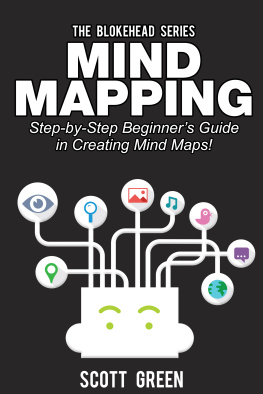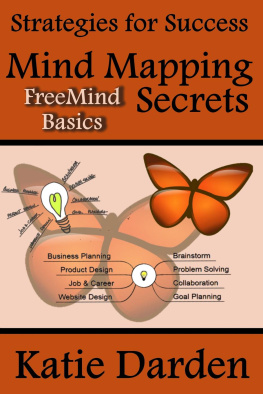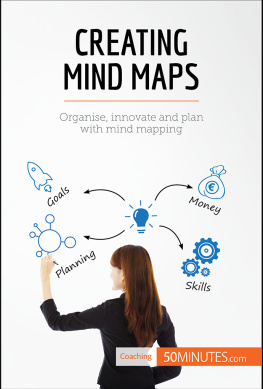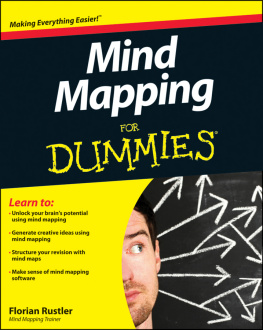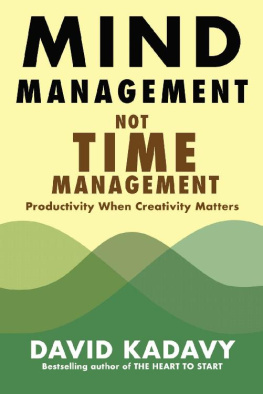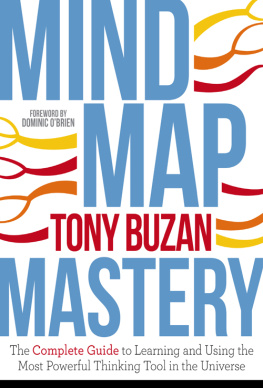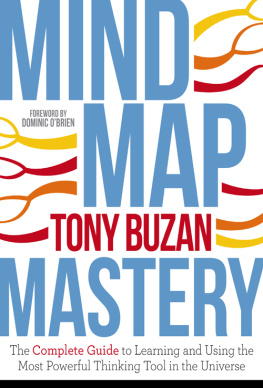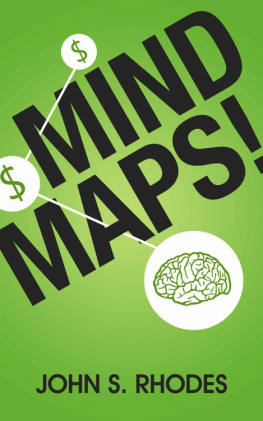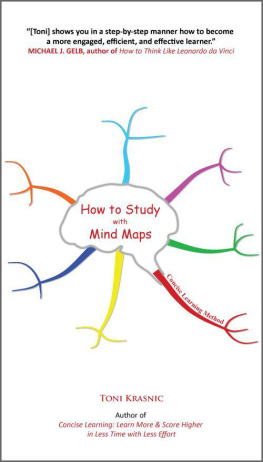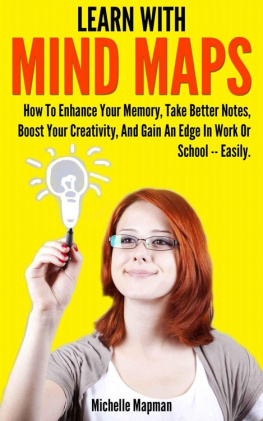Thank you for purchasing this book.
Click here to your download your free bonus
Triple Your Reading, Memory, and Concentration in 30 Minutes
Download today as the offer may not be available tomorrow.
Copyright 2012
All rights reserved, including the right to reproduce
this book or portions thereof in any form whatsoever.
TABLE OF CONTENTS
SECTION I
INTRODUCTION TO MIND MAPS
Introduction
From the time we start kindergarten to the time we graduate college, our schools, teachers, and educational system thrust overwhelming amounts of information at us. They tell us to read this, learn that, write this, and practice that. They shovel information and we're expected to cope as best as we can. The further we go, the bigger the shovel.
Although teachers tell us what to learn, they seldom show how. They never really offer proper ways to retain, classify, organize, and remember information. Instead, they feed us everything from when the Civil War started to the atomic weight of oxygen. Those who absorb the information are labeled smart . Those who dont are left feeling like they lack the ability to do well in school, and worse, in life. Unless we are clever or lucky enough to develop study strategies on our own, we never discover the proper ways to learn and remember what we are taught.
To make matters worse, we now live in the information age. Humans have never been surrounded by as much information as today. In fact, Google's executive chairman, Eric Schmidt, stated that every two days we produce the same amount of information as humans have produced from the dawn of writing to 2003. It is staggering how anyone can get a handle, let alone manage, all of this.
With the constant wave of new knowledge, by the time we master a skill, either more education is required to keep up, or the skill becomes obsolete. This is especially prevalent in the IT world, where new programming languages and technologies replace the old. Even if we wanted to stop learning, we can't for the risk of falling behind in life. We truly live in a time where if we are not moving forward, we are moving backward.
Fortunately, an innovative technique for learning and memory exists. It is a powerful method that mimics how the human brain naturally processes, manages, and stores data. The technique is called mind mapping and it is what you'll learn in this book.
Before reading further, please download your bonus Triple Your Reading, Memory, and Concentration in Thirty Minutes . Its free and supplements this books advice to ensure you learn more, in less time, and with less effort. You can download your free copy at MindLily.com/Free.
CHAPTER 1 - WHAT MIND MAPPING
Mind mapping is a note-taking tool that organizes words, thoughts, ideas, tasks, activities, and more in the form of a diagram. The diagram starts with a key or main idea in the center of a page, with subtopics radially around the main idea. The subtopics group and cluster similar ideas, and they branch out to lower and even lower-level topics, guiding one to wherever their thoughts go.
Below is an example of what it looks like:
This mind map discusses the planets of the solar system. As you can see, the main topic is in the center. The solar system has 8 planets, so 8 lines branch out from the center, which represent the subtopics. Each subtopic contains specific details about each planet in clusters around that planet. These are the lower-level topics.
This is the fundamental nature of mind maps. You start with a thought, idea, or problem in the middle, and then branch outward. The design is similar to a tree in that one keyword or idea begins the process, and from there, other interconnected and related entities stem.
Mind mapping is not a new concept. It has been around for over a millennium, and legendary intellects such as Leonardo da Vinci and Picasso are known to have utilized the method. More recently, Tony Buzan popularized and systematized the technique in the 1960s and 1970s. In fact, mind map and mind maps are registered trademarks of Buzans company. He has written books and produced shows about the concept. Since Buzans work, more and more have become enthusiastic users of the system.
Benefits of Mind Mapping
The benefits to mind mapping are many. For starters, they improve learning and memory by working in line with the associative nature of the brain. In addition, they make it quicker to process and easier to organize information. More importantly, the technique enhances creativity and encourages brevity. Since Buzans work, more and more people have become enthusiastic users of the system.
Associations
Every new thought or idea your brain has or learns needs to connect to other thoughts and ideas. When you learn a new piece of information, that fact doesnt aimlessly float around in your head. Instead, it attaches itself to something else. This is the way the brain worksby connecting thoughts, ideas, and experiences to other thoughts, ideas, and experiences. Each thought or idea in your head has hundreds to thousands of links in your mind.
For instance, have you ever seen or heard something while going about your daily life that then prompted a whole set of other memories? The memories are so vivid that you can feel the experience all over again. Perhaps you open the windows early in the morning and smell fresh-cut grass combined with newly blooming lilacs. Suddenly you are taken back to when you were ten years old. Your brother was mowing the lawn while your mother arranged hand-picked lilacs in a vase, and you sneezed at the strong scent. You relive the moment as the memory surges back like it was yesterday.
This is the brain making an association. It is taking the current experience brought on by the smell of newly-blooming lilacs and connecting it to an earlier encounter with the smell. If the brain were not associative, it would not bring up past experiences this way. In fact, the next time you encounter the smell of lilacs, that experience will more than likely be associated to the current one as well as to the one from childhood.
The brain makes such associations with every thought, idea, and experience. When learning about the Revolutionary War in history class, your mind connected it to guns, fighting, battles, and explosions because that is what movies and books have taught us about war. When you learned about numbers in school, the teacher connected them to quantities of physical objects like the number of crayons in a box. When you were taught the alphabet, she associated each letter with items whose name began with that letter a for apple, b for bear. Your teacher did this because in order to understand and retain new bits of data, the brain needs to connect it to something else.
In the solar system example, you can see that mind maps follows a similar structure. It starts off with a topic or idea in the center, and then associates other ideas around it. From there, even more thoughts and ideas join the subordinate ideas. Each piece of information is always connected to another piece. This is the way mind maps are structured. They bring together information in an associative way, similar to your brain.
Incorporates Sense of Sight
Another benefit of mind maps is that they incorporate the sense of sight. If you look at the above mind map again, more or less, it is an image processed by the same mechanisms that process sight. And the parts of the brain that process sight are much quicker and more powerful than the parts that process other types of information. Not only are images quicker to process, but they are also easier to remember. In 1970, Ralph Haber published research asserting that people have a recognition accuracy of images between 85 and 95 percent. This is true even if you are not a visual person.



